So you want to purchase tasty roasted coffee– but buying coffee can be full of twists and turns, particularly with so many details on the label. When you have a washed medium roast from Nicaragua on one side and a pulped natural from Brazil on the other side, you might start wondering: what is the difference between these coffees?
What is included in the coffee label?
Maybe more importantly, how are you supposed to know the one you are going to like?

Do not worry, because we are just about to help you out with our thorough guide to roasted coffee bag labels. We covered everything from varieties to manufacturing methods and blends to roast levels.
Name of brand
Commonly proud and loud, the name of the person or people who roasted the coffee will be at the front of the pack. These people did not only roast the coffee, though- they even decided to roast the coffee.
A roaster’s ability to source and select high-quality, well-produced green coffee requires as much talent, if not more, than roasting, brewing, or turning grapes into fine chardonnay.
Name of the farm
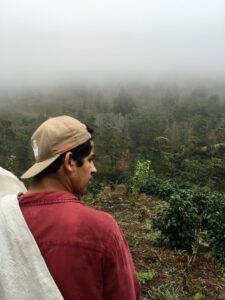
Most coffee roasters who source their coffee directly would include the name of the farm from which it originated on the bag. Because of this, and because they produce exceptionally good coffee, farms like La Palma y El Tucan or Finca Kilimanjaro have become very popular.
A single coffee farm will also grow several different varieties of coffee at varying altitudes.
Including the farm’s name, though not specifically showing the delicious coffee, does suggest traceability (which very often translates to something tasty).
Single vs blend origin

Single origin coffee
Single-origin coffees typically give the drinker a unique flavor profile. The tasting notes printed on a bag of coffee from Ethiopia’s Sidama region could include strawberry and chocolate, earl grey tea, and lemon printed on a coffee bag from the Huye region of Rwanda. Coffees of single origin are typically taken black to allow their distinctive flavor characteristics to come through.
Coffee blends
Blends, on the other hand, are a combination of beans, sometimes from various countries. The coffee roaster is the one who determines what coffees are going to be in a certain blend and what percentages.
With a blend, a coffee roaster will basically create a flavor profile—taking the sweetness of Kenyan coffee and blending it with the flavors of Colombian coffee.
Blends are usually produced with milk coffee in mind for cappuccino and lattes, but some roasters make some great filter coffee blends.
Read more about single origin vs blends.
Roast level
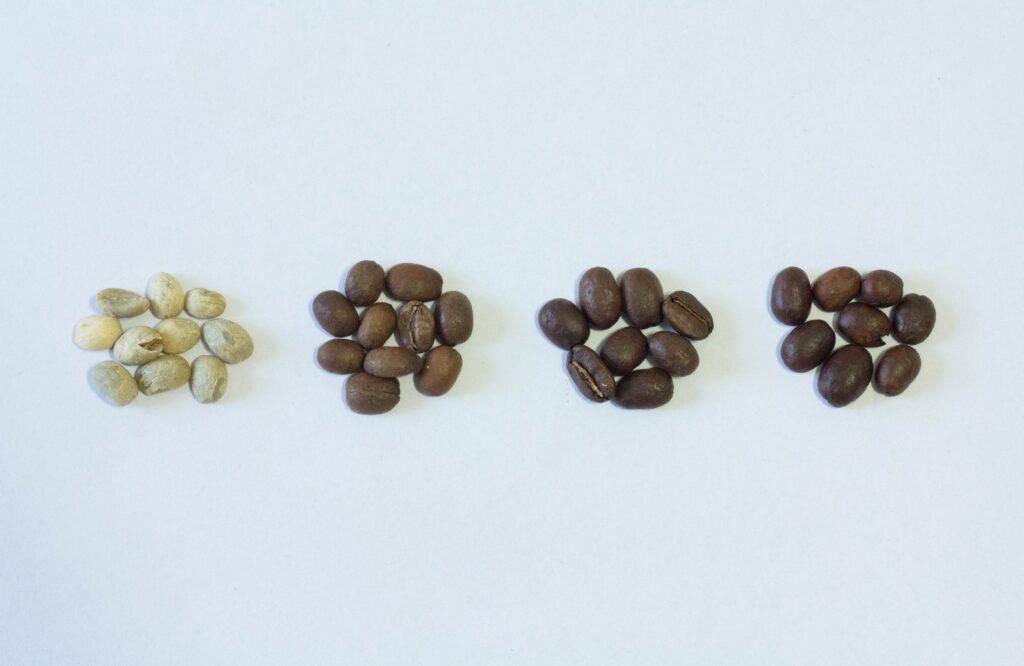
There are several different names for the roast type: dark, medium, light, City Plus, Vienna, Blonde, Filter, etc.
You should know that roasting is a method that produces the flavors and aroma of the coffee beans. That being said, if the roaster takes the roast too far, it produces additional flavors that overshadow the characteristics of the coffee. The under roasted beans are sour and grassy. On the other end, over-roasted beans are smoky, bitter, and unpleasant.
Although specialty coffee lovers prefer to opt for lighter roasts, the fact is that the best roast will rely on the beans themselves, the brewing process, and the drinker’s palate. Let us look at why.
- Light Roasts – often referred to as “blonde,” “cinnamon,” and “city,” while “city plus” will usually be a light-medium roast.
They accentuate fruity and acidic flavors and aroma, making them well matched to coffees with these qualities. Some people say that light roasts are far less sweet, but that is not always true. As high-quality specialty coffee is admired for its nuanced profile, many roasters go for light or medium-light roasts to illustrate this.
- Dark Roasts – also called “Light French,” or “Vienna” while “Italian” and “French” are very dark roasts.
If you drink a dark roast, you should expect to detect the roasting process itself. Think of bitter, toasty notes and a full body. Dark roasts can have a negative reputation among specialty coffee drinkers and are often believed to cover up the taste of bad coffee.
- Medium Roasts – often called “Full City,” while a somewhat darker medium roast may be called “Full City Plus.”
Why did we mention the medium after light and dark instead of in the middle? Since the medium is characterized in many respects by what it isn’t – it’s not light, and it’s not dark. Instead, think of smoothness, balance, and roast elements that do not overshadow the coffee’s natural flavors.
- Filter, Espresso, and Omni Roast
Broadly speaking, espresso roasts appears to be a little darker, and filter roasts slightly lighter. (This is different, however, from dark and light roasts.) Omni roasts, on the other end, are intended to be ideal for both filter and espresso.
So, why are the filters and the espresso roasted differently? Since espresso is an intense brewing process well adapted to sweet, fuller-bodied coffee, a filter is widely known for its complexities.
Date of roast
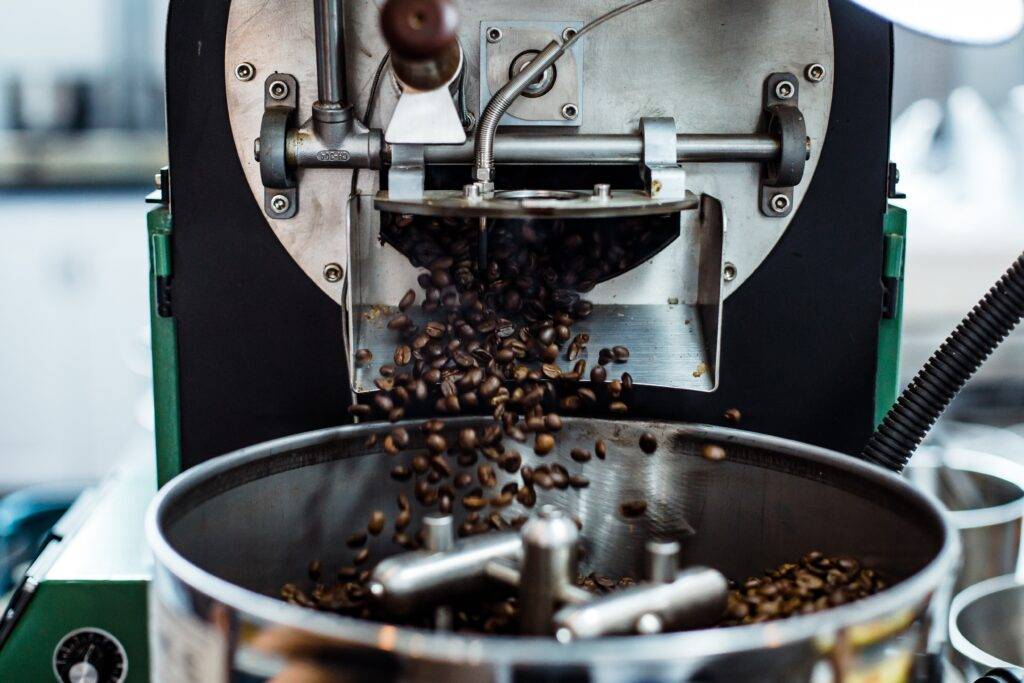
This is the date that the coffee was roasted. It is crucial to know when the coffee is roasted to tell when the coffee is expired and when the coffee is ready for use. You would never know how old it is just by looking at a coffee. Outside of brewing it, the roast date seems to be the only way to say its age.
During the roasting process, several chemical reactions occur inside the coffee bean, and, as a product, carbon dioxide gas ramps up within the bean. Within the next five days or so, the roasted coffee quickly gives up its stored C02 during a time known as degassing.
During this time, any coffee brewed can be brewed unevenly due to the release of gas, resulting in bitter, sharp, or excessively acidic flavors in the cup.
For a better outcome, preferably use your coffee between 5 and 15 days or up to thirty days after the roast date written in the bag.
A talented coffee roaster is happy to tell you what they know about their coffee. And you might find that the more committed a coffee shop or roaster is to their craft, the more knowledge they will have about coffee. If a coffee roaster knows the name of the person who grows the coffee, or the names of their whole family, you should know they are going to put it on the bag.
Processing method

Coffee is not exactly a bean. It is the seed of a fruit: a berry, commonly referred to as a “cherry” for its round shape and usually (but not always) a vibrant red appearance when ripe. But it is difficult to extract all the sticky layers of this fruit, which means that machinery and even fermentation should be used to do so. This is called coffee processing, and the type of processing used would also influence the taste of the coffee. That is why it could appear on the label of your coffee bag.
- Wet/Washed: the cherry flesh is separated by water, and the beans are dried. This approach adds very few flavors to the coffee, which ensures that you can really taste the coffee’s natural profile.
- Dry/Natural: the coffee is progressively dried under the sun while still in cherry. This approach yields a sweet, fruity taste. If the coffee is made poorly, it can be low quality and inconsistent. However, the outcome can be delicious when done well. It is also an environmentally friendly alternative, too.
- Honey & Pulped Natural: these coffees have been dried with varying cherry quantities still attached to the seeds. The more cherry was added to it, the sweeter the body.
However, the only way to grasp the variations in production methods is to try them out. Taste a washed and naturally processed coffee from the same area or, better yet, from the same plant. See for yourself what the difference is in the cup.
Species and variety
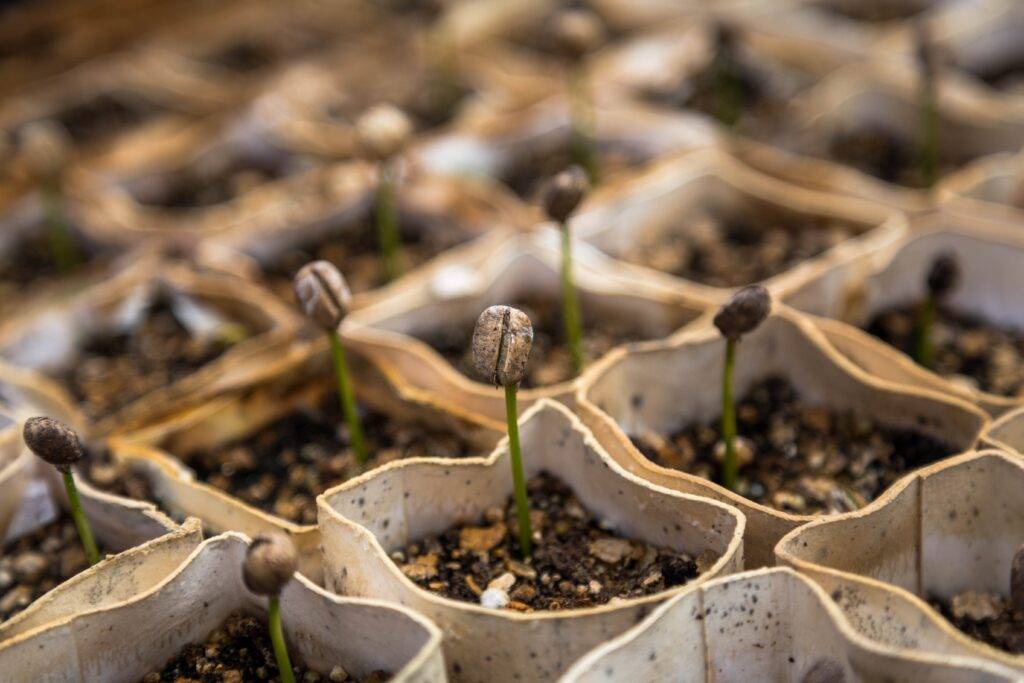
Not all coffee plants are similar, and not all of them can taste the same, either. The species and the variety can have a big effect on the cup’s final taste, so let us take a brief look at the common species.
Specialty coffee appears to be Arabica, a species renowned for its fragrance and delicious taste. Robusta is also another common species. It has a tougher taste and considerably more caffeine. And now and then, maybe you will come across fewer common species, such as Liberica.
Then there are the varieties: Catuaí, Typica, Caturra, Geisha/Gesha, Pacamara, Bourbon, Maragogype, and many more. Bourbon, for instance, tends to be sweet. Geisha/Gesha appears to have a light, tea-like body, a jasmine-like aroma, and a complex taste.
Once you start tasting the effect of processing on the coffee cup, it is time to start paying close attention to the varieties. Try a washed Bourbon and a washed Bourbon. Then compare these with the natural Bourbon of Rwanda. The uniqueness of specialty coffee is that every coffee is unique. There are so many variables that affect the taste of the cup, but we, as consumers, appreciate and enjoy all of them.
Elevation and altitude

You can see the elevation on certain coffee bags – sometimes referred to as altitude – that the coffee was produced, usually measured in meters above sea level (m.a.s.l.).
Why then are you supposed to be concerned about this? Since broadly speaking, the slower the coffee plant grows, the more time sugars have to develop. This could lead to sweeter, more complex coffees.
When contrasting two farms in the same area, the one at a high elevation tends to have cooler climates. For this cause, a higher m.a.s.l. was perceived as better-quality coffee. Be mindful, though: it can mislead you easily. Note, 1,100 m.a.s.l. would be cooler in Brazil than in Ecuador, for instance.
And then, you have to evaluate the implications of ocean currents, wind patterns, and more. Consider the Galapagos Islands, which bisect the Equator but at just 200 m.a.s.l., have a cooler local climate that produces delicious coffee.
Altitude: it’s valuable knowledge when interpreted in context. Use it to contrast two coffees from the same area, but don’t write down a low-altitude coffee until you’ve tried it. Perhaps it just might shock you.
Flavor notes
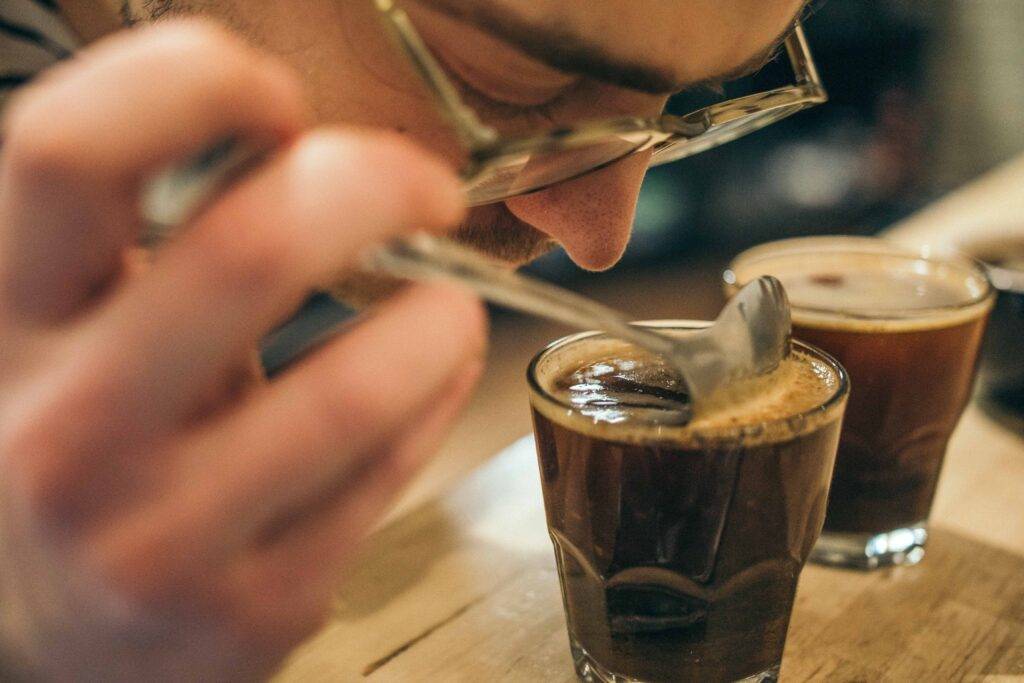
Coffee roasters, once they have finished roasting, will conduct a tasting process known as cupping. Basically, they are going to grind their coffee, place it in tiny bowls side by side, and smell it.
Then hot water is introduced, the crust is dissolved, and the grind is skimmed from the top of the bowl with spoons. The coffee is then sampled by tasting (loudly slurped is the right word!). The flavor profile printed on a coffee bag is the notes of this cupping process.
A flavor profile, instead of a detailed description of what you are going to taste: you will feel like you’re eating a bar of chocolate or a mango—is more of a: this coffee brings back memories of chocolate or has the sweetness and acidity of juicy mango.
This to not say that other coffees do not, with every sip, taste of a gulp of blueberries, such as some Kenyan SL-28 variety coffees.
The taste profile printed on a coffee bag is just like the taste notes on a bottle of wine; it is unique and sensitive to the taste buds of the person who printed it, but it is going to give you a rough idea of what to expect.
Coffee certifications
A bag of imported green coffee can bear several different certifications for coffee. These certifications are also seen on roasted coffee packages in the form of small tags or tags.
This indicates that the coffee producer, or the green coffee buyer, has satisfied the criteria set by a specific foundation, be it Fairtrade America, Rainforest Alliance, or the Smithsonian Migratory Bird Center.
The lack of one of these tags does not suggest that farmers are under-treated or that the farm practices environmentally harmful farming techniques. Many coffee roasters personally source their coffee, work closely with farmers and their farms, and pay them far above fair-trade rates for their coffee.
Cup of excellence, good food awards
They are either produced by the farmer or roaster based on some merit, typically in terms of the beans’ taste quality. Examples of awards include Cup of Excellence, Good Food, and Golden Bean.
Ground coffee vs. whole bean

You will find on any bag you look at, either the whole or the ground bean. I will strongly recommend that you buy whole bean coffee and grind it when you want to make your coffee. The explanation for this is that once you grind coffee, it will instantly begin to lose its flavoring properties.
So, by the time you are about to brew your coffee, much of the flavor you are looking for will be lost. That is why a lot of specialist roasters can only sell whole bean coffee.
If you do not have a grinder, you are going to want to buy a burr grinder as it chops the beans more finely for a better-tasting cup of coffee.
Purpose (espresso vs. drip)
Coffee is sometimes labeled with its planned purpose in mind. Coffee has historically been sold in the U.S. with a drip or filter in mind. It is normal for companies to roast and pick beans specifically for coffee preparation differently from drip coffee.
Quite lately, specialty companies have pushed more towards a “uni-roast” intended to be used for either preparation. Luckily, any coffee bean or blend can be used too, so do not feel odd if you prefer “espresso” coffee as a drip or vice versa. Company reviews are a guide; however, the more you accept whatever the company tells you, the more you will want to hear their advice.
Conclusion
While many of the things we see in a bag of coffee have no reasonable use to us, knowing the farm’s name, for example, is one piece of information that doesn’t matter. It does not give us any hints of the flavors in the bag (unless we have taken coffee from this farm before); what that level of information does tell us, however, is that the roaster truly understands this information.
This degree of information is really about traceability. And the traceability of coffee is a very positive thing. We know exactly what we are buying, we know the people we are getting it from, and we know exactly where we’re going to get it. The more information you have, the better.
Disclaimer: This post contains affiliate links, which means I may receive a small commission, at no extra cost to you, if you make a purchase using these links. Remember to support us by purchasing through the Amazon/Walmart/Impact Radius links provided. Last update on 2024-04-18 / Affiliate links / Images from Amazon Product Advertising API
Disclosure: No compensation or free products were received in exchange for writing this review.

Editorial Staff
The editorial staff at Crazy Coffee Crave is a team of coffee enthusiasts & Baristas who enjoy the one thing we all think about as soon as we get up in the morning. Trusted by thousands of readers worldwide.





